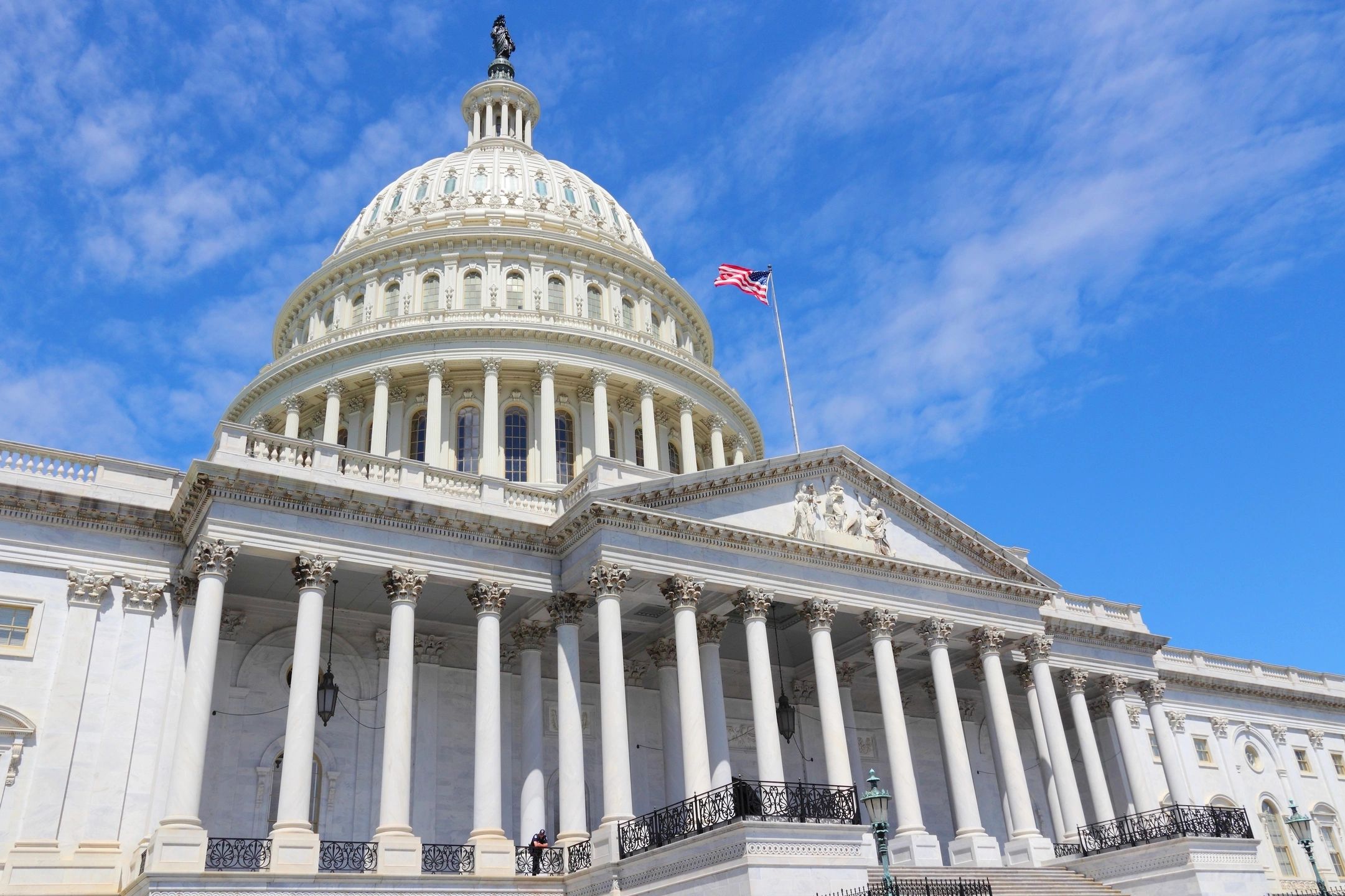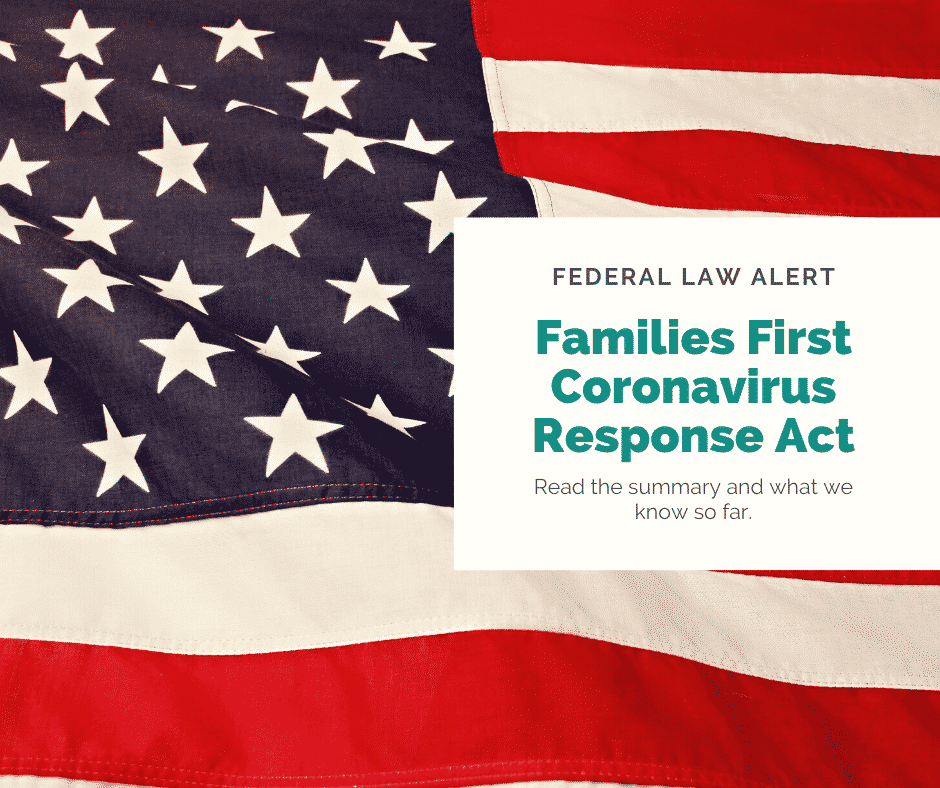DOL Alert: Employers must post a notice of the Families First Coronavirus Response Act
On March 26, the U.S. Department of Labor announced that each covered employer must post a notice of the Families First Coronavirus Response Act (FFCRA) requirements for employees. Along with the posting notice, the DOL also released a set of frequently asked questions regarding the posting, which we’ve shared below. You can also download the posting below.
Per the DOL, the paid sick leave and expanded family and medical leave provisions of the FFCRA apply to certain public employers, and private employers with fewer than 500 employees. Most employees of the federal government are covered by Title II of the Family and Medical Leave Act, which was not amended by this Act, and are therefore not covered by the expanded family and medical leave provisions of the FFCRA. However, federal employees covered by Title II of the Family and Medical Leave Act are covered by the paid sick leave provision. Small businesses with fewer than 50 employees may qualify for exemption from the requirement to provide leave due to school closings or child care unavailability if the leave requirements would jeopardize the viability of the business as a going concern. See Department FFCRA regulations (expected April 2020).
Download Required Posting for Employers (PDF)
Where do I post this notice? Since most of my workforce is teleworking, where do I electronically “post” this notice?
Each covered employer must post a notice of the Families First Coronavirus Response Act (FFCRA) requirements in a conspicuous place on its premises. An employer may satisfy this requirement by emailing or direct mailing this notice to employees, or posting this notice on an employee information internal or external website.
Do I have to post this notice in other languages that my employees speak? Where can I get the notice in other languages?
You are not required to post this notice in multiple languages, but the Department of Labor (Department) is working to translate it into other languages.
Do I have to share this notice with recently laid-off individuals?
No, the FFCRA requirements explained on this notice apply only to current employees.
Do I have to share this notice with new job applicants?
No, the FFRCA requirements apply only to current employees. Employers are under no obligation to provide the notice of those requirements to prospective employees.
Do I have to give notice of the FFCRA requirements to new hires?
Yes, if you hire a job applicant, you must convey this notice to them, either by email, direct mail, or by posting this notice on the premises or on an employee information internal or external website.
If my state provides greater protections than the FFCRA, do I still have to post this notice?
Yes, all covered employers must post this notice regardless of whether their state requires greater protections. The employer must comply with both federal and state law.
I am a small business owner. Do I have to post this notice?
Yes. All employers covered by the paid sick leave and expanded family and medical leave provisions of the FFCRA (i.e., certain public sector employers and private sector employers with fewer than 500 employees) are required to post this notice.
How do I know if I have the most up-to-date notice? Will there be updates to this notice in the future?
The most recent version of this notice was issued on March 25, 2020. Check the Wage and Hour Division’s website or sign up for Key News Alerts to ensure that you remain current with all notice requirements: www.dol.gov/agencies/whd.
Our employees must report to our main office headquarters each morning and then go off to work at our different worksite locations. Do we have to post this notice at all of our different worksite locations?
The notice needs to be displayed in a conspicuous place where employees can see it. If they are able to see it at the main office, it is not necessary to display the notice at your different worksite locations.
Do I have to pay for notices?
No. To obtain notices free of charge, contact the Department’s Wage and Hour Division at 1-866-4-USWAGE (1-866-487-9243). Alternatively, you may download and print the notice yourself from https://www.dol.gov/agencies/whd/posters
I am running out of wall space. Can I put the required notices in a binder that I put on the wall?
No, you cannot put federal notices in a binder. Generally, employers must display federal notices in a conspicuous place where they are easily visible to all employees—the intended audience.
We have break rooms on each floor in our building. Do I have to post notices in each break room on each floor or can I just post them in the lunchroom?
If all of your employees regularly visit the lunchroom, then you can post all required notices there. If not, then you can post the notices in the break rooms on each floor or in another location where they can easily be seen by employees on each floor.
Our company has many buildings. Our employees report directly to the building where they work, and there is no requirement that they first report to our main office or headquarters prior to commencing work. Do I have to post this notice in each of our buildings?
Yes. Where an employer has employees reporting directly to work in several different buildings, the employer must post all required federal notices in each building, even if the buildings are located in the same general vicinity (e.g., in an industrial park or on a campus).
View more DOL Resources on FFCRA here.
The Department will not bring enforcement actions against any public or private employer for violations of the Act occurring within 30 days of the enactment of the FFCRA, i.e. March 18 through April 17, 2020, provided that the employer has made reasonable, good faith efforts to comply with the Act. For purposes of this non-enforcement position, an employer who is found to have violated the FFCRA acts “reasonably” and “in good faith” when all of the following facts are present:
- The employer remedies any violations, including by making all affected employees whole as soon as practicable. As explained in a Joint Statement by the Department, the Treasury Department and the Internal Revenue Service (IRS) issued on March 20, 2020, [2] this program is designed to ensure that all covered employers have access to sufficient resources to pay required sick leave and family leave wages.[3]
- The violations of the Act were not “willful” based on the criteria set forth in McLaughlin v. Richland Shoe, 486 U.S. 128, 133 (1988) (the employer “either knew or showed reckless disregard for the matter of whether its conduct was prohibited…”).
- The Department receives a written commitment from the employer to comply with the Act in the future.
If the public or private employer either (i) violates the Act willfully, (ii) fails to provide a written commitment to future compliance with the Act, or (iii) fails to remedy the violation upon notification by Department, the employee seeking payment, or a representative of that employee, including by making all affected employees whole as soon as practicable, the Department reserves its right to exercise its enforcement authority.
After April 17, 2020, this limited stay of enforcement will be lifted, and the Department will fully enforce violations of the Act, as appropriate and consistent with the law.






Reply a Comment